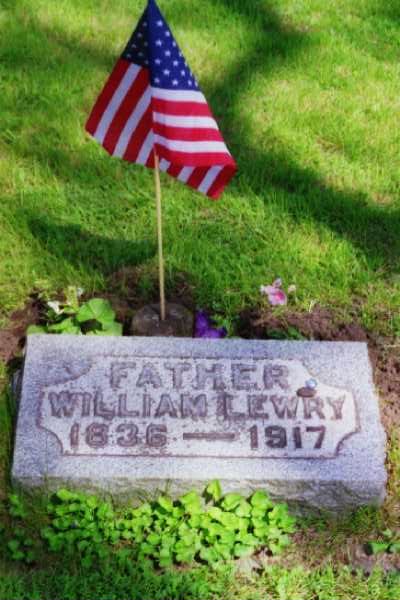By the time he returned to the dunes country, the war was over, Lincoln was dead, and the late President’s funeral train had passed by his unfinished house on the south ridge of the Glenwood Dune. By 1878 William had established a wagon shop, blacksmith shop and a dry goods store ‘Lewry & Son’ that he operated with his eldest son Henry. In 1882 he was elected as a Pine Township Trustee and served during the construction of the 1883 Porter County Courthouse and the Valparaiso Opera House as well as the first brick school in Pine Township that survived until burning in the 1930s. His ‘History of Pine Township’ was added to the cornerstone of the Courthouse. In 1884 William and Sarah returned to Brighton for a visit. Today their red brick home remains as one of the oldest surviving houses in the Indiana Dunes National Lakeshore area. The 1863 Lewry House was the setting for the motion picture “All My Friend’s are Funeral Singers” released at Sundance in 2010. The house is also a setting in the historical fiction Toys in the Closet published in 2015.
By the time he returned to the dunes country, the war was over, Lincoln was dead, and the late President’s funeral train had passed by his unfinished house on the south ridge of the Glenwood Dune. By 1878 William had established a wagon shop, blacksmith shop and a dry goods store ‘Lewry & Son’ that he operated with his eldest son Henry. In 1882 he was elected as a Pine Township Trustee and served during the construction of the 1883 Porter County Courthouse and the Valparaiso Opera House as well as the first brick school in Pine Township that survived until burning in the 1930s. His ‘History of Pine Township’ was added to the cornerstone of the Courthouse. In 1884 William and Sarah returned to Brighton for a visit. Today their red brick home remains as one of the oldest surviving houses in the Indiana Dunes National Lakeshore area. The 1863 Lewry House was the setting for the motion picture “All My Friend’s are Funeral Singers” released at Sundance in 2010. The house is also a setting in the historical fiction Toys in the Closet published in 2015.
Family Members
Sponsored by Ancestry
Advertisement
Records on Ancestry
Advertisement





















